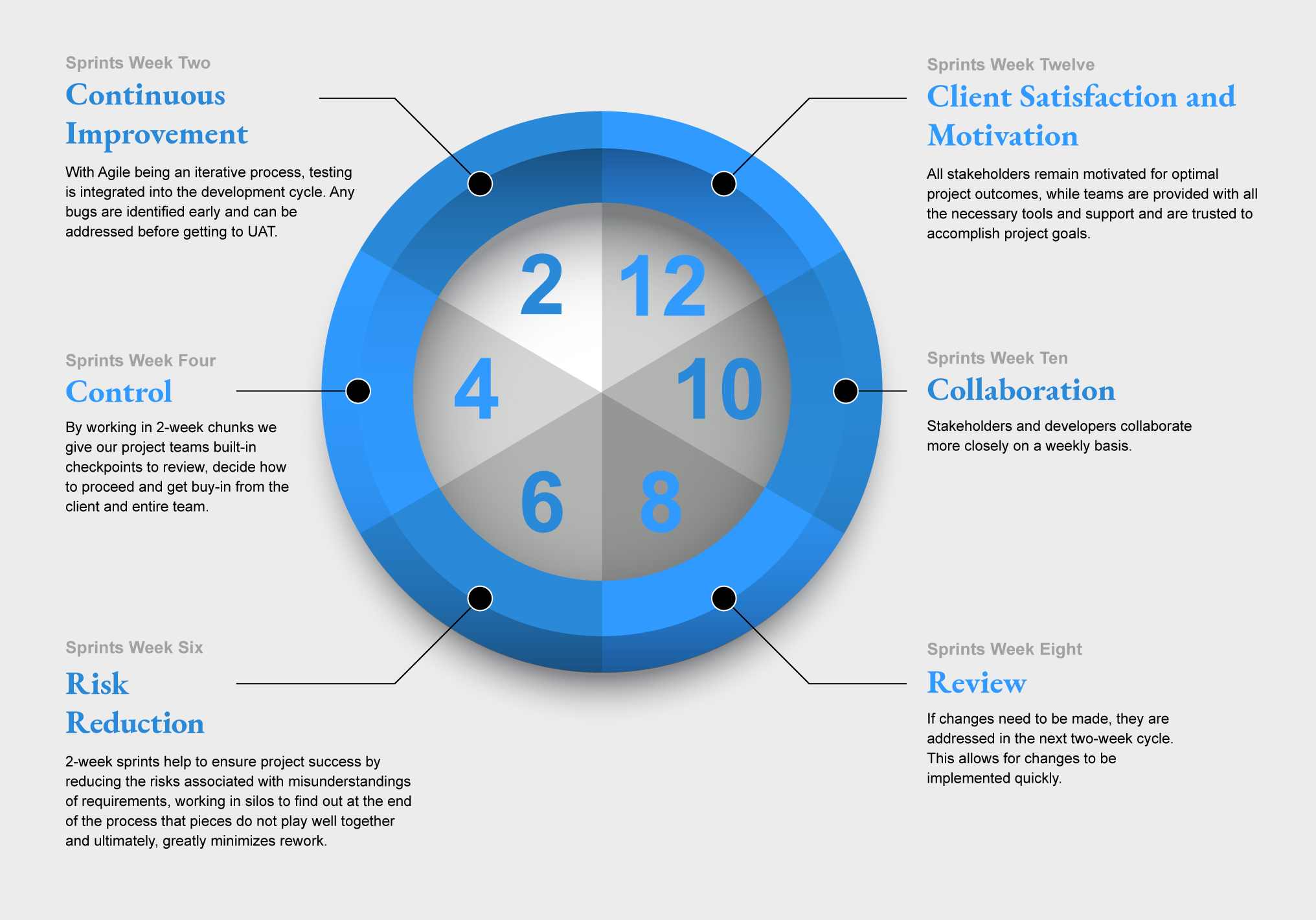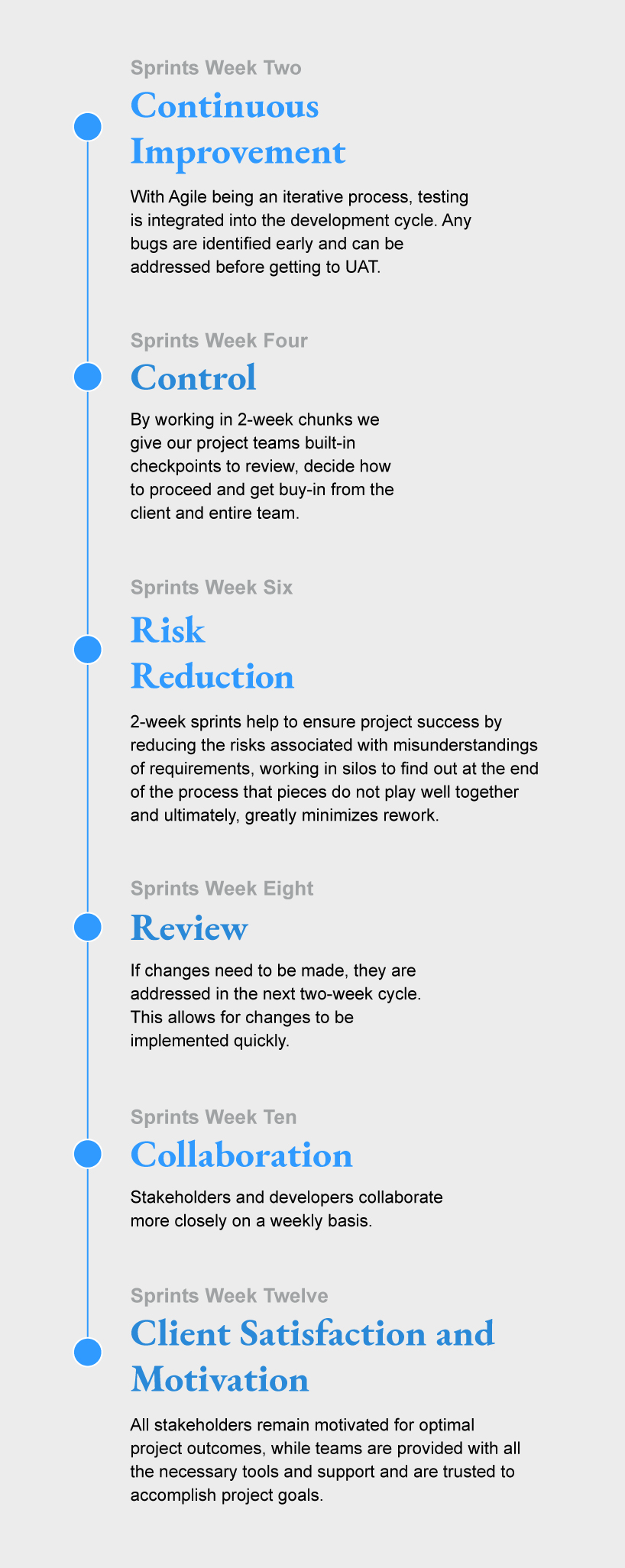Overview
Project management and the overall life cycle of your company’s system development and its success is dependent upon the experience of your custom software development partner. HDI Solutions, LLC has extensive experience with the effective implementation and project management of large-scale system solutions.
From the project management perspective, HDI utilizes PMBOK project management techniques along with Agile development cycles. By using two-week sprints in the development process versus the antiquated waterfall approach, all development is being constantly monitored and tested to ensure that the project is on time and within scope, as well as allowing for company feedback and insights.
After each development milestone, components are thoroughly tested by HDI’s internal test group. Development work does not move into the production environment until it is fully tested and approved by the client. HDI uses JIRA and other Atlassian project management tools to document and facilitate tasks and keep the project on track.

How HDI Manages Projects
HDI is dedicated to our projects being on time and within budget and has established a tried-and-true process to make it happen. Each of our project managers are PMP (Project Management Professional) certified and trained in the PMBOK standards (Project Management Body of Knowledge).
What is PMBOK?
PMBOK is a collection of standards, best practices and procedures for planning and executing projects successfully from start to finish. This style of effective project management constantly evolves, and HDI has found it to be the ideal method for executing system development projects smoothly within set timeframes.
There are five PMBOK stages that HDI follows for each project, to the benefit of both HDI clients and HDI internal teams:
Closing also includes post-project analysis both internally and with the client – our team is always looking for feedback and ways to improve our process and work. We look at what worked, what didn’t, and lessons learned, to make sure we are always growing and developing as a company.
HDI strives to be Intentional, Timely and Transparent regarding the project management and development process. Read our feature article to learn more about our in-depth development and project management process.
Sample 12 Week Development Cycle
2 Week Sprints Allow For


